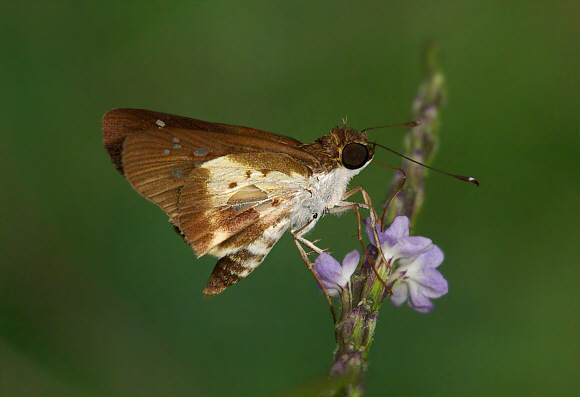
Introduction
The genus Andronymus comprises of 10 species, all of which are Afrotropical in distribution. They and the similar genus Paronymus are characterised by having a white patch on the hindwing, which contains within it a small triangular semi-hyaline window. Paronymus in comparison have a much straighter edge to the outer margin on the forewing. They are also larger and differ in the structure of the genitalia.
Andronymus caesar is the commonest and most widespread member of the genus. It is found from Sierra Leone to Sudan, and south to Angola, Zambia, Zimbabwe and Mozambique.
Habitats
This species is found in primary and secondary forest.
Lifecycle
The larval foodplants include Afrormosia, Isoberlina, Pterocarpus, Macrolobium, Berlinia, Pericopis, Julbernardia, Detarium ( Fabaceae ), and Deinbollia, Phialodiscus and Blighia ( Sapindaceae ). The utilization of dicotyledons as foodplants is very unusual among Hesperiinae, which in almost every other genus feed on monocotyledons ( grasses, sedges, palms, bamboos etc ).
Adult behaviour
This butterfly is usually encountered singly when visiting flowers along the edges of forest roads. It can also be seen along the narrower trails, darting from leaf to leaf in the undergrowth and pausing occasionally to feed at bird droppings.
